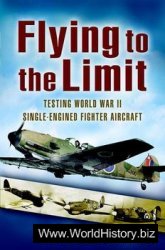In the First World War, the importance of air reconnaissance had eventually been recognized. The greater number of fliers lost in that war were shot down because of the British High Command’s determination that airmen should watch for concentrations of men and materiel at the railheads. Had Allied fliers shown such curiosity about
German deployment in the spring of 1940, they would have seen Kleist’s armored units, which were backed up into a traffic jam stretching back more than 100 miles behind the frontier.
Reconnaissance aircraft might have seen the eight military bridges across the Rhine that had been reported back to Swiss intelligence and had enabled the Swiss to guess that an attack was to be made in the region of Sedan. One French bomber pilot, returning from a night mission over Dusseldorf where, in accord with the Allied air policy since war began, he had dropped nothing more dangerous than propaganda leaflets, did report a 60-mile column of vehicles, all with headlights on, making for the Ardennes. It seemed too fanciful to be believed, and no action was taken, even after the reports were confirmed by other French fliers.
At 9 p. M. on 9 May 1940 the code word Danzig went out to the alerted units. The grotesque traffic jam had begun to move. That night. Hitler boarded his private train to set up a HQ at Mlinstereifel, 25 miles southwest of Bonn. In keeping with the Fiihrer’s melodramatic taste, it was called Felsennest (eyrie).
1, The Northernmost Attack: Holland
For many generations the Dutch had known no enemy but the ocean. Their soldiers had fought only in colonial wars and the occasional riot in the homeland. The Dutch had benefited economically from their neutrality in the First World War and were convinced that Hitler too would pass them by. They were almost right. On 29 October 1939 the invasion of the Netherlands had been dropped from Plan Yellow, but the Luftwaffe objected. The German airmen, lacking any long-range bombing units, insisted that they would need forward airfields there for the ensuing war against England. Holland was then included once more in the invasion plan.
The German Eighteenth Army was smaller than the Dutch Army that it faced. It had only one panzer division, and this was the weakest of all the armored units. If the lightweight PzKw I and PzKw II tanks are discounted, it had only thirty-eight tanks. But this northern army was supported by almost the entire German airborne force.




 World History
World History









